28 Authentic Northern German Foods You Must Taste
Northern German cuisine offers a delightful culinary journey through hearty, rustic traditions deeply rooted in coastal and agricultural landscapes.
Regional specialties reflect the area's maritime heritage and agricultural abundance, blending robust flavors with simple, nourishing ingredients.
Cold climate influences have shaped distinctive cooking techniques that emphasize preservation and comfort.
Seafood plays a prominent role, complemented by rich dairy products and robust grains that sustain local populations.
Seasonal ingredients transform ordinary meals into extraordinary gastronomic experiences, showcasing remarkable creativity and cultural connections.
Recipes passed through generations reveal deep respect for local produce and time-honored preparation methods.
The culinary traditions represent more than just food - they communicate stories of community, resilience, and environmental adaptation.
Prepare to savor these 28 authentic northern German foods that will tantalize your taste buds and transport you to a world of delectable regional delights:
Authentic Northern German Foods for Hearty Appetites
Northern Germany is known for hearty comfort foods, sausages, breads, and rich stews. Sample classic recipes that have warmed generations through long winters and coastal storms.
Franzbrotchen
Franzbrotchen are Hamburg's iconic sweet pastries infused with layers of buttery cinnamon and sugar.
German bakers create these delicate treats by folding dough multiple times to generate a rich, sticky texture with caramelized edges.
Originating during Napoleon's occupation, these pastries reflect French culinary influence in northern Germany.
Bakers carefully prepare franzbrotchen using traditional ingredients like flour, butter, milk, yeast, and sugar.
Cinnamon and sugar form the classic filling, though some variations include raisins, chocolate, or pumpkin seeds.
Each pastry develops a golden-brown exterior through careful glazing and precise folding techniques.
Typically served alongside coffee, franzbrotchen have become a beloved breakfast and afternoon snack across German cities.
Diners appreciate their complex layers and sweet, indulgent flavor profile.
Holsteiner Katenschinken
Holsteiner Katenschinken is a prized North German ham from Schleswig-Holstein, renowned for its unique eight-week smoking process over open fires.
Craftsmen carefully cure pork meat to develop a strong, intense aroma with a surprisingly mild flavor profile.
Modern smoking techniques now use specialized chambers and barns instead of traditional open fires.
Mahogany-colored and delicately textured, this ham boasts a distinctive appearance that sets it apart from other regional varieties.
Sandwich makers and appetizer creators prize its mild taste and smooth consistency.
German butchers follow strict traditional methods to preserve its authentic character.
Regional traditions protect its preparation techniques, ensuring quality and authenticity.
Schleswig-Holstein locals consider this ham a cherished culinary treasure.
Karamellkartoffeln
Karamellkartoffeln are golden-brown caramelized potatoes from Denmark and Northern Germany that transform simple boiled potatoes into a festive Christmas side dish through a magical sugar and butter coating.
Danish families traditionally prepare these potatoes by boiling new potatoes and coating them with a rich mixture of melted butter, sugar, salt, and nutmeg.
Each potato gets carefully tossed to ensure complete coverage before baking in a greased dish until achieving a crisp, caramelized exterior.
Nutmeg adds warm complexity to the sweet and savory flavor profile.
Sugar creates a glossy, slightly crunchy surface that elevates basic potatoes into an elegant accompaniment.
Northern German households share similar preparation methods during holiday meals.
Restaurant menus frequently feature these potatoes alongside roasted meats and traditional festive dishes.
Knackwurst
Knackwurst is a robust German sausage distinguished by its signature crispy casing that creates a distinctive cracking sound when bitten.
Originating in northern Germany, this preboiled sausage blends ground pork and beef with intense garlic seasoning and high fat content.
German butchers craft the sausage using traditional techniques that ensure a rich, meaty flavor profile.
Grilling or pan-frying transforms the knackwurst into a crackling treat with a juicy interior.
Authentic serving recommendations include pairing the sausage with tangy sauerkraut, creamy potato salad, and crisp pickles.
Beer provides the perfect accompaniment to this hearty sausage.
Maximum enjoyment comes from serving knackwurst hot and fresh, straight from the grill or skillet.
Fischbrotchen
Fischbrotchen are classic Northern German seafood sandwiches bursting with maritime flavors and fresh ingredients.
Hamburg street vendors popularized these quick meals along coastal regions.
Soft bread rolls cradle various fish options like herring, sprat, salmon, and mackerel.
Crisp pickles, zesty remoulade sauce, sharp onions, and fresh lettuce complement the fish perfectly.
Seafood lovers enjoy these sandwiches as convenient street food throughout Germany's northern coastal areas.
Fast-food stands frequently serve these handheld meals to hungry locals and tourists.
Regional bakeries and maritime markets often feature these sandwiches as quick, satisfying lunch options.
Seafood freshness and simple preparation make fischbrotchen a beloved German street food tradition.
Kieler Sprotten
Kieler sprotten are small, golden-hued Baltic Sea fish smoked using a traditional German method that transforms silvery sprats into a prized regional delicacy.
Beech, alder, and oak firewood infuse these herring-family fish with an extraordinary smoky flavor and distinctive yellow-golden color.
Fishermen from Eckernforde originally caught these tiny fish, which gained fame through Kiel's robust trading network.
Wooden boxes traditionally store the smoked fish after processing.
German seafood markets prominently feature these small, flavorful sprats.
Regional culinary traditions carefully preserve the smoking techniques passed down through generations.
Kieler sprotten represent a unique intersection of maritime heritage and gastronomic skill.
Their delicate texture and intense smoky taste make them a beloved German seafood specialty.
Holsteiner Tilsiter
Holsteiner Tilsiter is a distinguished German semi-hard cheese originating from Schleswig-Holstein with a distinctive flavor profile that evolves through careful aging.
Regional cheese makers craft this wheel-shaped dairy product exclusively from cow's milk within its traditional geographic boundaries.
Farmers produce the cheese with strict regional protocols, creating a light-yellow wheel featuring small eyes and natural cracks throughout its body.
Caraway remains the sole permitted spice, contributing to its unique taste character.
Mild versions offer aromatic notes, while aged selections deliver sharper, more intense flavors.
Its supple, springy texture distinguishes the cheese from other regional varieties.
Thin yellow-brown rinds protect the cheese during its maturation process.
Developed in the late 19th century, Holsteiner Tilsiter represents a proud culinary tradition of northern German cheesemaking.
Teewurst
Teewurst is a smooth, spreadable German sausage crafted from finely ground pork and bacon, distinguished by its unique cold-smoking and fermentation process.
German butchers traditionally prepare this sausage using beechwood smoking techniques that ensure safe consumption without additional cooking.
Mild and slightly sour, teewurst boasts a soft texture perfect for spreading on crackers or open-faced sandwiches.
Its name originates from the German word "tee," reflecting its historical association with afternoon tea gatherings.
German regional traditions influenced the sausage's development, emphasizing careful meat selection and seasoning.
Fermentation gives teewurst its distinctive tangy flavor profile and preserves the meat.
Artisan butchers continue to produce this sausage using time-honored methods passed down through generations.
Harzer
Harzer cheese originates from Germany's Harz mountain region as an ultra-low-fat dairy product containing just 1% fat, making it a favorite among fitness enthusiasts.
Sportspeople appreciate its lean protein profile and distinctive strong, pungent aroma that sets it apart from other cheeses.
German producers create two bacterial varieties - yellow and red - with the red version delivering a spicier flavor profile.
Artisan cheesemakers carefully ripen Harzer for several days to a week, developing its unique character.
Small or long log shapes characterize this cheese, which manufacturers typically wrap in cellophane before selling.
Caraway seeds frequently enhance its robust taste, adding complexity to its simple composition.
Kluten
Kluten are German dumplings with a delicate texture crafted from simple ingredients like flour, milk, eggs, and butter.
Spoon-dropped into boiling water or soup, these soft morsels cook quickly and develop a light, pillowy consistency.
Germans enjoy kluten in both sweet and savory dishes, with popular preparations including buttermilk vanilla pudding and sour cherry soup.
Their mild flavor makes them versatile companions to many culinary creations.
Small and unassuming, kluten absorb surrounding flavors effortlessly.
Kluten reflect Germany's rustic cooking traditions with their straightforward preparation and adaptable nature.
Helgolander Knieper
Helgolander knieper are succulent brown crab claws harvested from Germany's North Sea island of Helgoland, representing a unique maritime culinary tradition.
Fishermen carefully detach these prized claws while still aboard their boats, using the crab's body as fishing bait.
Traditional preparation involves cooking the claws directly in seawater, preserving their natural ocean-fresh flavor.
Island residents have adapted their fishing practices since World War II, when lobster populations dramatically declined.
Brown crab populations have steadily increased, making these claws a significant export for Helgoland's small community.
Seawater cooking maintains the meat's delicate texture and pure marine essence.
Each claw offers a rich, briny taste that connects you to the island's rugged maritime heritage.
German seafood enthusiasts prize these tender, simply prepared crustacean morsels as a distinctive regional delicacy.
Gottinger Feldkieker
Gottinger feldkieker is a traditional German pork sausage originating from Lower Saxony that boasts a unique air-dried preparation method dating back to the 18th century.
Distinctive for its production in Gottingen, this raw sausage stands out through its distinctive stuffing process using a pig's bladder.
Regional butchers carefully craft the sausage with specific techniques that differentiate it from similar Gottinger Stracke sausages.
Manufacturers pay close attention to its shape, diameter, and weight during production.
Precise ripening processes contribute to its complex flavor profile.
Germany's sausage-making heritage shines through in this carefully prepared meat product.
Pork remains the primary ingredient, ensuring rich and authentic taste.
Specialized production methods reflect generations of local meat preservation traditions.
Gottinger Stracke
Gottinger stracke represents a traditional Austrian sausage crafted from premium pork cuts blended with aromatic spices like coriander, nutmeg, and garlic.
Meat specialists carefully mince shoulder, leg, and belly sections, adding strategic ingredients such as sugar, yeast, and rum to enhance fermentation and flavor complexity.
Small amounts of sugar control the maturation process, ensuring balanced pH levels during aging.
Thin, straight casings encase the seasoned meat mixture, which develops its signature taste during a four-week aging period.
Rum and spices contribute subtle depth to the sausage's rich profile.
Regional butchers pride themselves on maintaining precise techniques for crafting this traditional sausage.
Each stage of production demands meticulous attention to create a balanced, flavorful cured meat delicacy.
Bremer Braunkohl
Bremer braunkohl ranks as a hearty northern German winter specialty featuring chopped kale sauteed with rich animal fat and aromatic onions.
Bremen locals transform this rustic green vegetable into a satisfying meal by mixing it with grains like oats or buckwheat groats.
Regional traditions often pair braunkohl with smoked sausages or pork for extra flavor and protein.
Winter gatherings frequently feature this warming regional specialty as a centerpiece meal.
Ammerlander Schinken
Ammerlander Schinken is a premium German dry-cured ham renowned for its exceptional flavor profile and traditional production method from Lower Saxony.
Regional butchers carefully select high-quality pork legs for processing through meticulous dry-salting techniques using sea salt and brown sugar.
Ham makers typically cure the meat on the bone for several weeks, allowing natural flavors to develop deep complexity.
Skilled artisans may enhance the ham with subtle spices like pepper, pimento, and juniper during preparation.
Premium cuts demonstrate superior meat quality through distinctive taste characteristics without excessive seasoning.
Meat preservation methods follow generations-old techniques specific to northern German culinary traditions.
Schnusch
Schnusch is a hearty northern German vegetable stew blending seasonal garden produce with creamy dairy elements.
Farmers and rural families traditionally prepared this simple one-pot meal using fresh vegetables harvested directly from their gardens.
German kitchens often serve schnusch as a quick midday meal during harvest seasons.
Winter months make this stew particularly welcome for warming cold families.
Small villages in northern Germany continue maintaining this classic vegetable recipe as part of their culinary heritage.
Ostfriesentorte
Ostfriesentorte is a luxurious German layer cake beloved in East Frisia, featuring multiple thin cake layers generously soaked in strong black tea and rum.
Rich egg yolks create a delicate, spongy base that absorbs liquid perfectly.
Bakers carefully separate egg whites and yolks to achieve an airy texture.
Bourbon and vanilla sugar enhance the cake's complex flavor profile.
Traditional preparation involves precise mixing of flour, sugar, and baking powder.
Tea-soaking transforms the cake into a moist, intensely flavored dessert.
Each layer receives careful attention during assembly.
German tea culture deeply influences this regional specialty.
Hamburger Aalsuppe
Hamburger Aalsuppe is a complex German soup with a fascinating historical misunderstanding that transformed its core ingredients and character.
Northern Germans originally crafted this versatile dish using leftover ingredients like ham bones, fruits, and vegetables in a broth seasoned with vinegar and sugar.
Regional language confusion led to its name shift when outsiders mistakenly believed "aol suppe" meant eel soup, prompting Hamburg cooks to eventually add actual eel to satisfy expectations.
Chefs now prepare this soup with a clear ham broth featuring a blend of seasonal produce including carrots, leeks, dried plums, apples, and pears.
Traditional spices like thyme, coriander, marjoram, and sage provide depth and complexity to the broth.
Knodel dumplings add substance and texture to the soup's overall composition.
Hamburg residents consider this soup a unique culinary expression of resourcefulness and adaptability.
Birnen, Bohnen Und Speck
Birnen, Bohnen und Speck blends North German countryside traditions with a remarkable sweet-and-savory meat and vegetable combination that celebrates regional agricultural ingredients.
Cooking pears simmer alongside green beans and smoky bacon pieces in an aromatic herb-infused broth seasoned with summer savory, thyme, parsley, salt, and pepper.
German home cooks traditionally prepare this dish using specific cooking pears (kochbirnen) carefully peeled and cored to maintain their delicate texture.
Summer gardens provide fresh green beans that complement the rich bacon's saltiness.
Traditional preparation involves slow cooking ingredients until beans become tender and pears soften slightly.
Summer savory adds a distinctive herbal note that elevates the entire dish's flavor profile.
Rural North German households have enjoyed this balanced one-pot meal for generations, highlighting the region's agricultural bounty.
Lubecker Marzipantorte
Lubecker marzipantorte crowns German dessert traditions with its exquisite blend of smooth marzipan and delicate sponge cake layers from Lubeck's renowned confectionery heritage.
Bakers carefully craft this luxurious cake by alternating light sponge layers with rich marzipan spreads and occasional fruit preserves or chocolate fillings.
Almonds provide subtle crunch and enhance the cake's complex texture and flavor profile.
Skilled artisans often decorate the exterior with intricate marzipan designs or toasted almond garnishes.
Germany's northern regions especially treasure this sweet creation as a celebration of regional culinary craftsmanship.
Lubeck's historical reputation for superior marzipan production significantly influences the cake's exceptional quality.
Each slice offers a harmonious balance of sweetness and nutty undertones.
Ammerlander Dielenrauchschinken
Ammerlander Dielenrauchschinken delivers a distinctive spicy flavor from Lower Saxony's special pork breed called Ammerlander Edelschwein.
Regional butchers carefully select premium pork with exceptional meat quality and firmness.
Ham makers smoke the meat lightly to enhance its natural robust characteristics.
Specialized production techniques originate from traditional methods passed through generations in Germany's Ammerland region.
Meat preparation involves precise curing and controlled smoking processes.
Quality standards ensure consistent taste and texture for each ham slice.
Meat selection focuses on specific pig breeds known for superior meat composition.
Smoke intensity provides a balanced spicy profile that distinguishes this regional German ham specialty.
Bremer Klaben
Bremer Klaben are dense, sweet yeast breads originating from Bremen, Germany, with roots tracing back to 16th-century Hanseatic League trading networks.
Bakers crafted these traditional holiday specialties using exotic ingredients like candied fruits, raisins, almonds, and citrus peels acquired through maritime trade routes.
German bakers enhance Klaben's rich flavor with aromatic spices such as cardamom, rum, and nutmeg, creating a complex taste profile.
Unique among German holiday breads, Bremer Klaben differ from Dresdner Stollen by remaining undusted with powdered sugar after baking.
Nuts and dried fruits provide textural complexity to the dense bread.
Each slice offers a glimpse into Bremen's culinary heritage.
Regional bakers continue preparing Klaben using traditional methods, preserving its authentic character.
Schwarzsauer
Schwarzsauer is a robust German blood soup rooted in northern German culinary traditions, specifically Schleswig-Holstein, that transforms fresh pig blood into a rich, tangy dish traditionally prepared during seasonal pig slaughtering.
German farmers meticulously collected warm blood during butchering to create this hearty soup with pork chunks and aromatic spices.
Vinegar provides a sharp acidic balance to the deep, iron-rich flavor of animal blood.
Onions and classic spices like bay leaves, peppercorns, and cloves enhance the soup's complex taste profile.
German butchering communities historically considered this soup a practical way to use every part of the slaughtered animal.
Matrosenfleisch
Matrosenfleisch is a hearty Bremen specialty featuring beef tenderloin elegantly wrapped in crispy bacon and prepared with a rich, tangy sauce.
Sailors traditionally enjoyed this robust meat dish on long sea voyages, using simple ingredients to create a flavorful meal.
Beef steaks get seasoned with salt and pepper before being coated in flour and quickly browned in butter.
Onions and parsley sauté in the same pan, creating a fragrant base for the sauce.
Cooks sprinkle flour into the pan and stir until fully absorbed, developing deep flavor layers.
Beef stock, sour cream, lemon peel, capers, and marjoram blend into a creamy, zesty sauce that complements the meat perfectly.
Bremen's maritime culinary tradition shines through this classic dish that combines rustic techniques with complex flavors.
Sailors would have appreciated this satisfying meal that provided warmth and nourishment during challenging ocean journeys.
Kloppschinken
Kloppschinken are succulent German ham cutlets from Uckermark that transform ordinary ham into a crispy, golden-brown delicacy through a meticulous preparation process.
Pounding thin slices of boiled or smoked ham creates tender meat ready for seasoning with milk and nutmeg.
Chefs carefully marinate the ham, allowing flavors to penetrate deeply before coating it in beaten eggs and breadcrumbs.
Frying the cutlets in oil produces a crunchy exterior that contrasts with the juicy interior.
German families typically enjoy this dish during casual family meals or weekend gatherings.
Rural Uckermark communities have preserved this classic recipe for generations, maintaining its authentic preparation method.
Tuften Un Plum
Tuften un plum are hearty German potato soup packed with robust flavors from northern Germany's culinary traditions.
Regional home cooks blend potatoes, onions, carrots, and celery into a smooth base with vegetable stock and white wine vinegar.
Crisp bacon bits add smoky depth to the creamy mixture.
Sautéed prunes provide unexpected sweetness and complexity to the soup.
Vegetable ingredients simmer together until tender and fully integrated.
White wine vinegar brings a subtle tangy undertone to balance the rich profile.
Bacon and prunes garnish the finished soup, offering contrasting textures and intense taste sensations.
Birnen Im Teig
Birnen im teig are a savory German pastry wrapped around pears with Westphalian ham, combining sweet and salty flavors in a unique baked dish from Schleswig-Holstein.
Regional bakers carefully prepare this specialty by poaching pears with lemon peel and creating a light, fluffy batter using butter, eggs, flour, and milk.
Ham lines the baking dish before pears are nestled inside and covered with a delicate mixture of whipped egg whites and batter.
Precise mixing ensures a smooth texture that highlights the contrast between tender fruit and crisp pastry.
Salt enhances the overall taste profile, creating a balanced blend of ingredients.
Traditional preparation methods pass through generations of German home cooks.
Each slice reveals layers of complexity and regional culinary tradition.
Ham and pears merge into a single, harmonious bite that represents northern German comfort food.
Welfenspeise
Welfenspeise is a stunning German layered dessert symbolizing royal Hanover's Welfen dynasty through its iconic yellow and white colors.
German culinary traditions celebrate this elegant pudding with its distinctive two-toned appearance representing historical nobility.
Egg whites form the delicate white base, combining milk, cornstarch, vanilla, sugar, and salt into a smooth cream.
Egg yolks create the golden layer, blended with sugar, lemon juice, white wine, and cornstarch for rich depth.
Home bakers carefully prepare each layer separately, allowing them to set and cool in glass bowls.
Careful chilling ensures perfect texture and separation between layers.
Wine and lemon add subtle complexity to the dessert's flavor profile.
German dessert lovers appreciate this simple yet sophisticated sweet treat that connects modern palates with centuries-old culinary heritage.
Which Northern German Foods Are Served During Festivals or Holidays?
Northern Germany boasts a rich culinary tradition with special dishes served during festivals and holidays, reflecting local ingredients and customs:
Marzipan and Lebkuchen: Sweet treats enjoyed around Christmas time.
How Are Smoked Fish and Pickled Items Used in Northern German Meals?
Smoked fish and pickled foods are staples in Northern German cuisine, reflecting the region’s proximity to the sea and preservation traditions:
Smoked and pickled foods create a balanced palate and are essential components of everyday meals and special occasions alike.

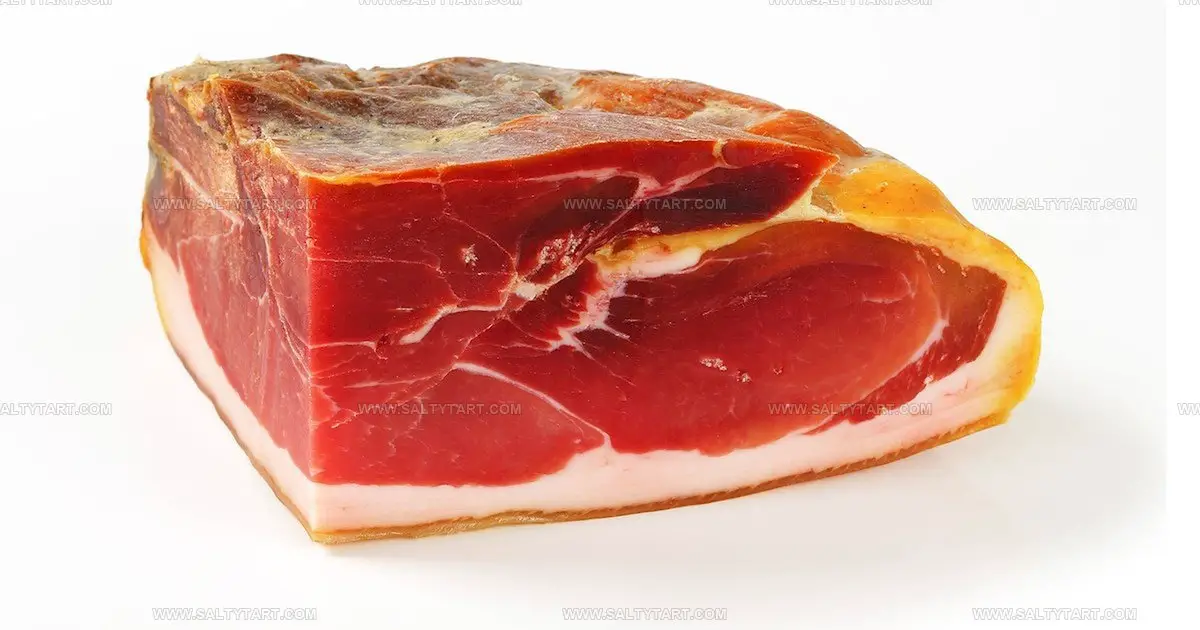
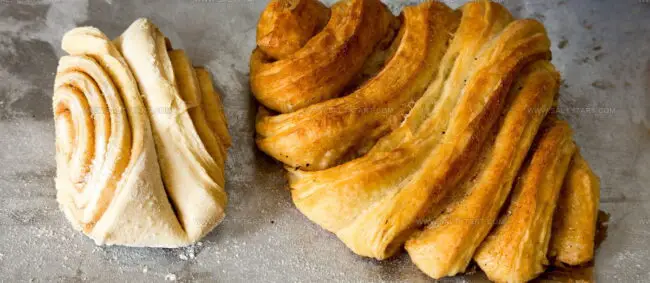
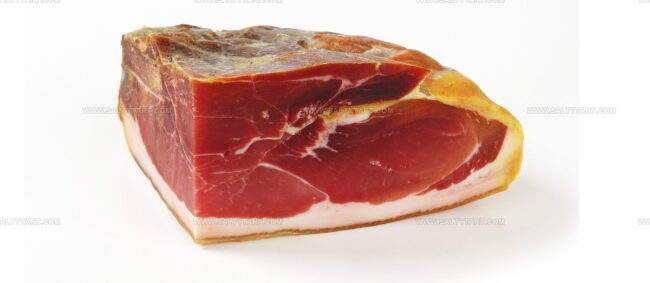
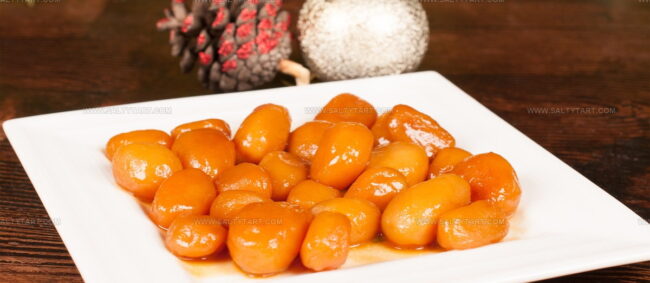

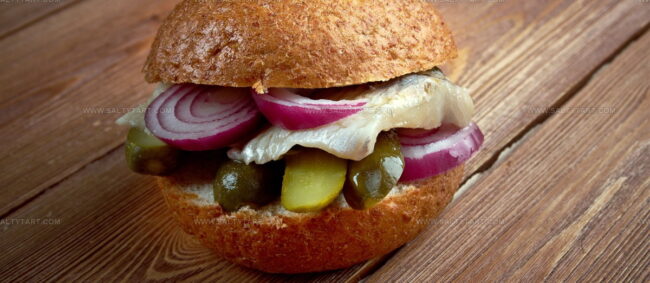
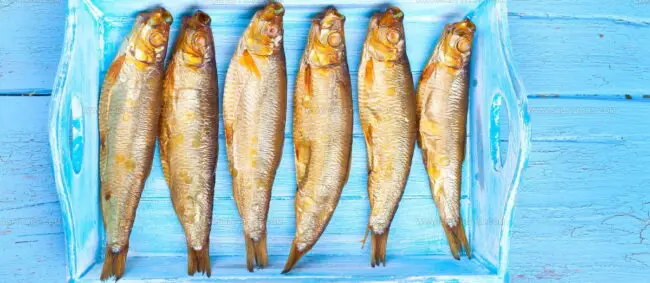
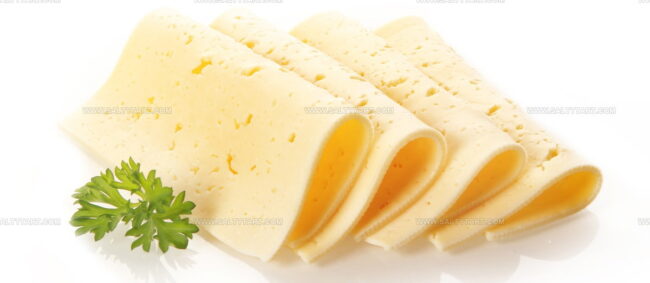


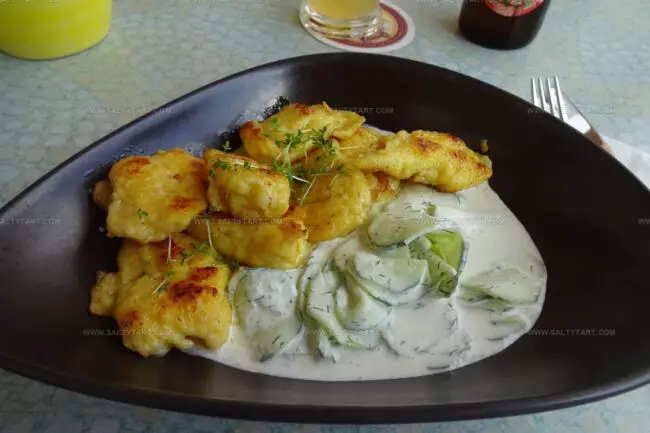
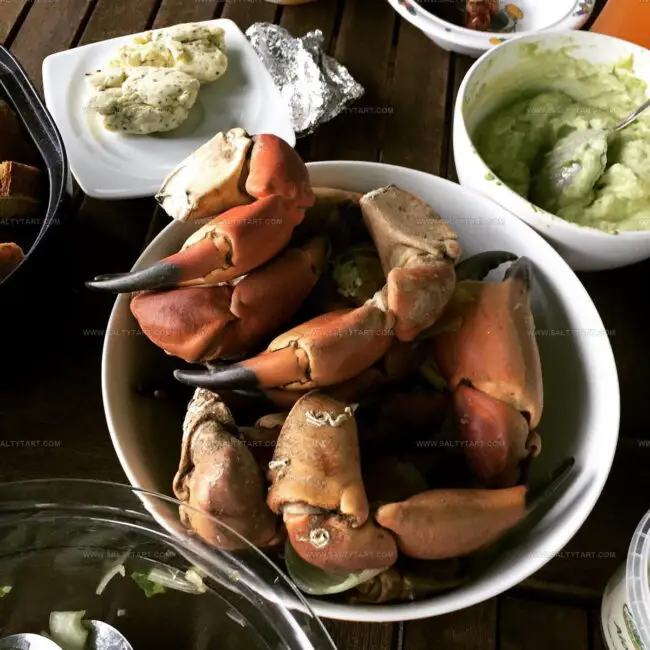
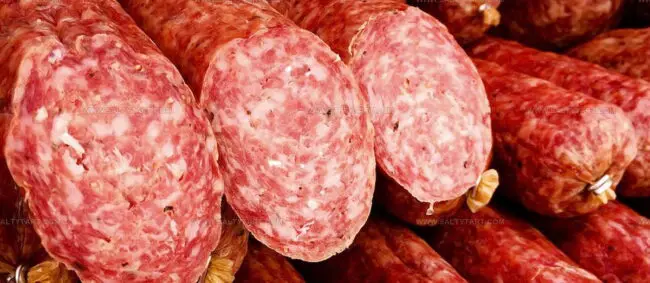

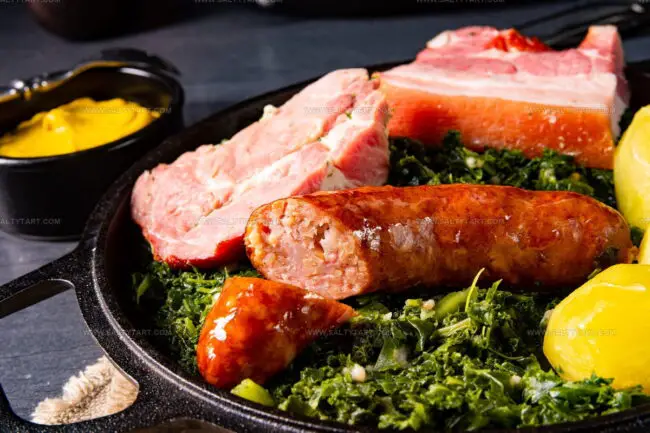
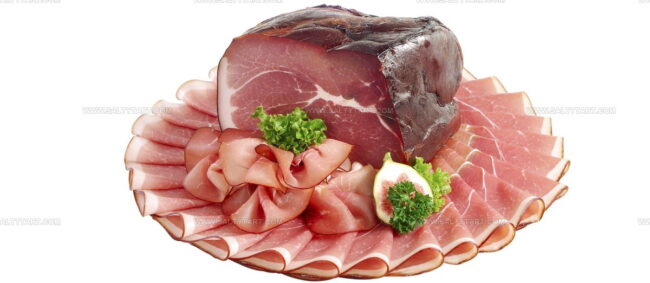
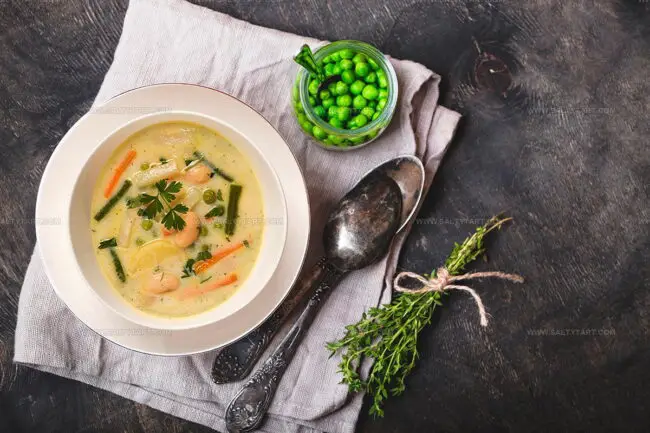

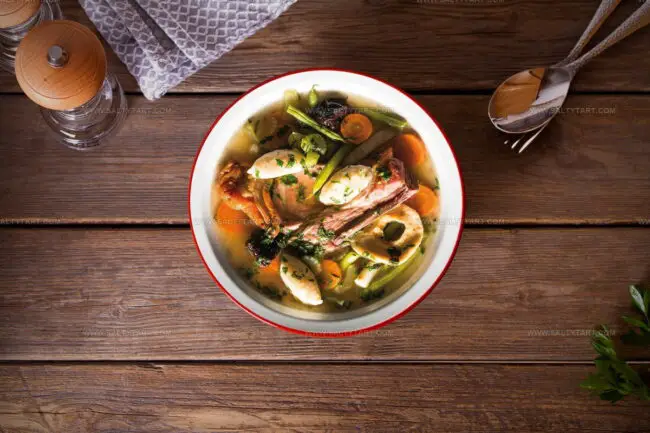
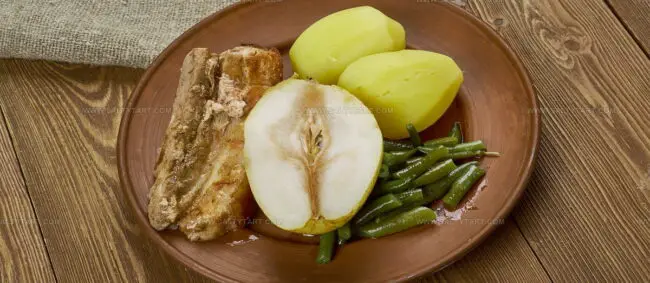
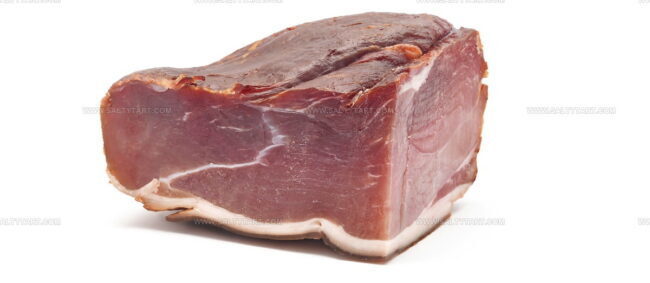
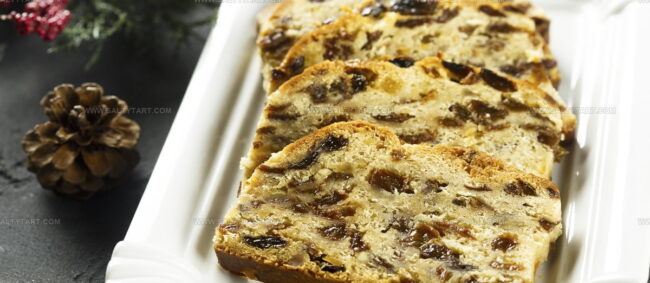
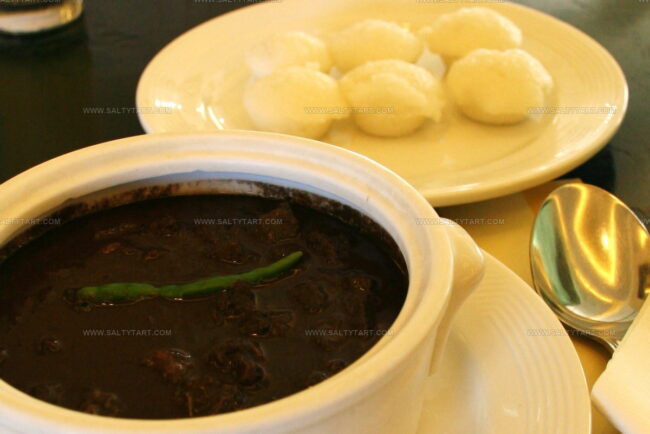
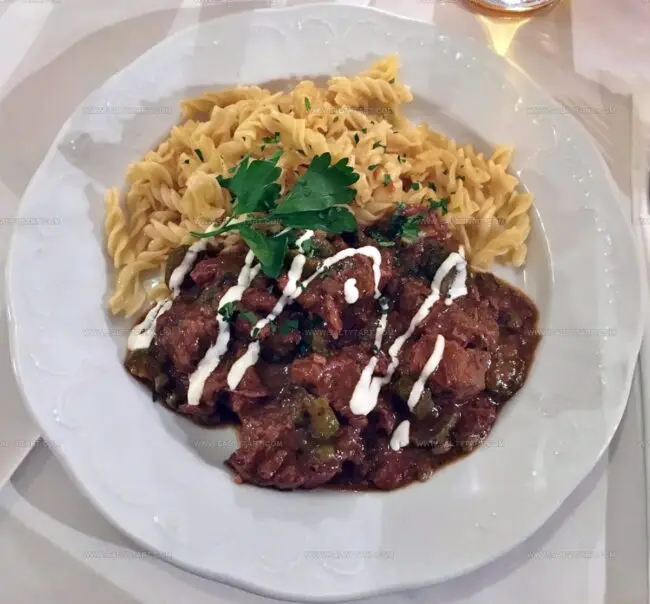

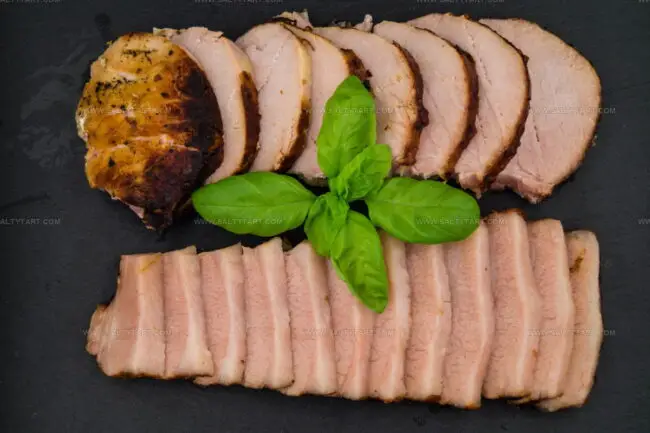
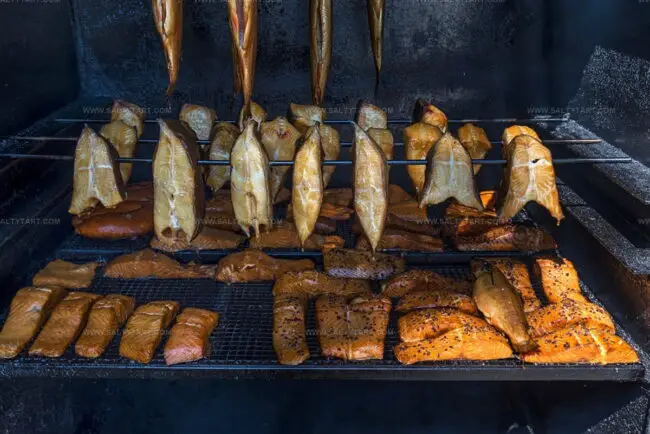
Jess Martinez
Contributing Recipe Writer & Nutrition Consultant
Expertise
Southwestern and Latin American cooking, Nutritional analysis and healthy recipe planning, Cultural food traditions, Modifying traditional dishes for better health
Education
Santa Fe Community College
Certificate in Culinary Arts
Focused on mastering the flavors and cooking methods of traditional Southwestern cuisine.
Jess’s love for bold, homegrown flavors led her straight into the world of Southwestern cooking and cultural nutrition.
After completing her Certificate in Culinary Arts at Santa Fe Community College, she made it her mission to show that good-for-you food can still taste incredible.
At saltytart.com, Jess shares vibrant, health-conscious recipes with roots in tradition but a fresh, modern twist. When she’s not testing new recipes, you’ll find her at local growers’ markets, tending her herb garden, or digging into food history books.